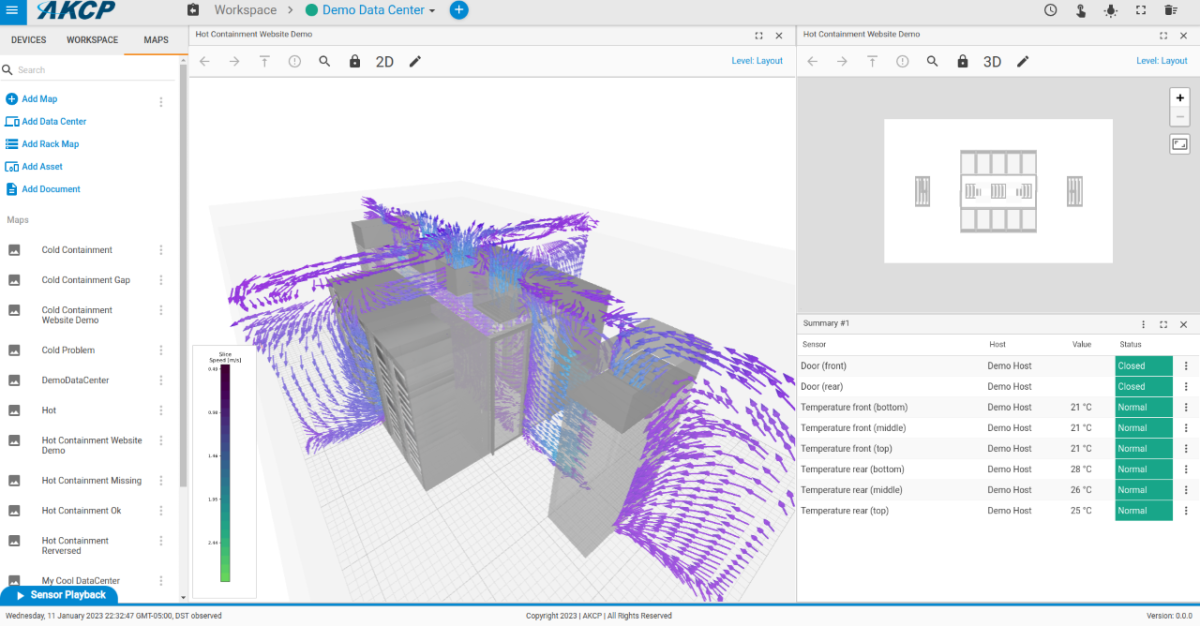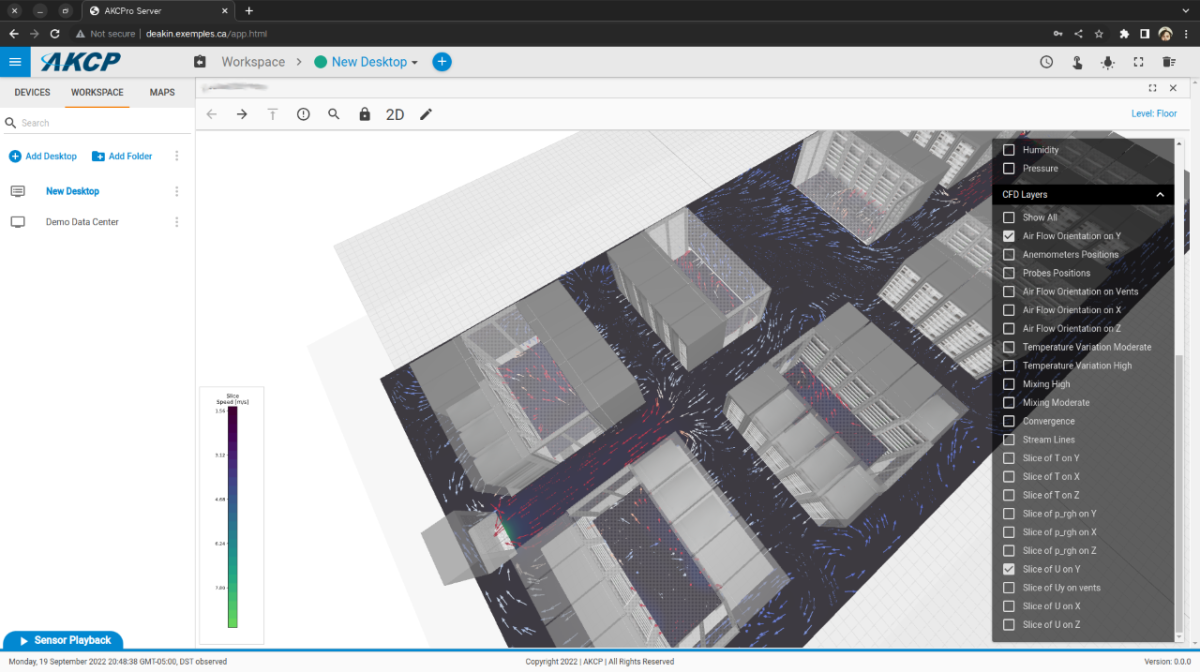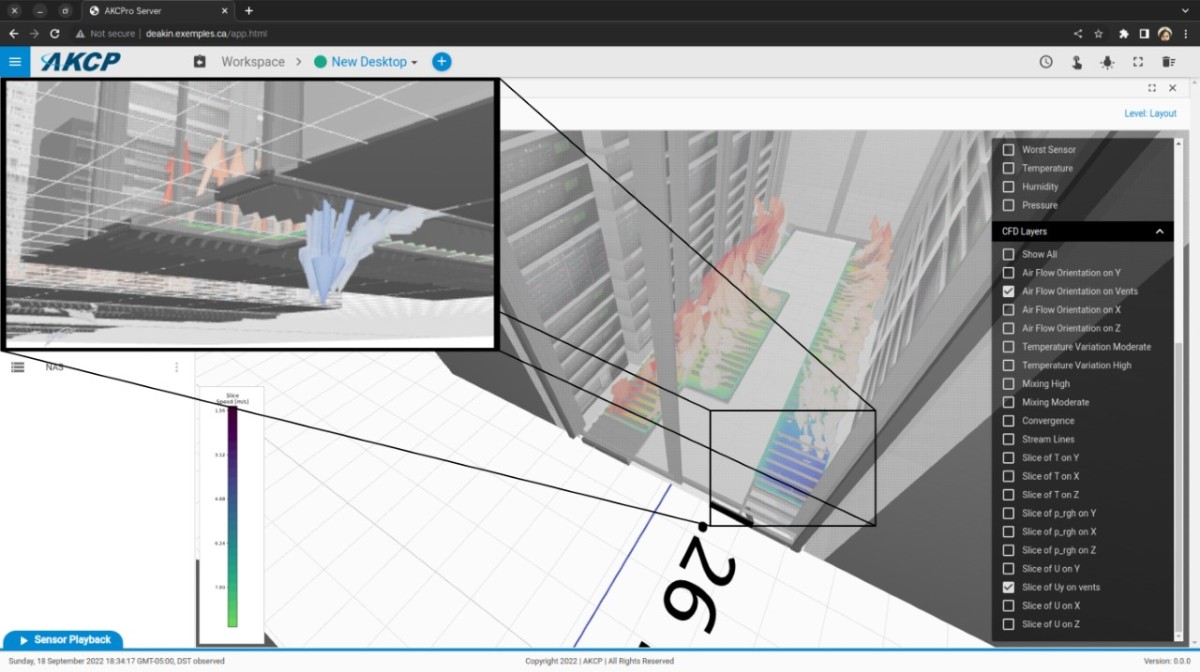CFD utilizes on well-known equations and is precise in simple applications. A useful CFD analysis requires an accurate model of the physical layout, a prediction of the heat loads and validation of the model. The parameters used to create the models are important. They usually include the power usage and cooling capacity. In the traditional approach, while planning the data center, the model relies on estimated values for parameters such as the kW per rack and CRAH capacity. Those values are usually determined by the engineer’s best guess. This is fine for checking if the design meets maximum capacity requirements and placing the CRAH units for optimal airflow.
However, an operational data center isn’t a static system. It’s dynamic. Server loads continually change. CRAH units don’t always run at capacity. The fans speed up, slow down or become used and dirty. Blanking panels can be missing, containment not sealed properly, air is pushed in different directions. The built solution doesn’t match the CFD parameters. This leads to a model that doesn’t represent the actual performance of the data center.

The Difference Between sensorCFD™ and CFD
sensorCFD™ doesn’t replace CFD. It merges CFD with live sensors for a more accurate model. An ideal deployment begins with CFD, then uses sensorCFD™ in a validation process. sensorCFD™ runs continually, measuring, analyzing, and reporting the health of the data center cooling.

Operational Data Center CFD
The CFD model for an operational Data Center needs to undergo a process known as validation. Sensors placed in strategic locations capture the temperatures, power per rack and airflow. This information verifies that the CFD model is correct. Thermal maps from AKCP are ideal for validation. They monitor the inlet and outlet temperatures of each rack, at the top, middle and bottom. Combined with non-invasive power meters and air flow sensors, an evaluation of the airflow and the heat exchanges in the data center is performed.
Wired or wireless sensors may be used. For extreme security, battery operated, wireless sensors connect directly with the engineer’s laptop. Data is recorded without any interaction with the data center network or power.
For permanent installations that run continuously, wired sensors are preferred. sensorCFD™ can use servers located in the data center to compute accurate CFD models in a loop. Depending on the complexity of the model and the power of the computer, a CFD model can be completed in under 2 hours. A comparative analysis of earlier models produces a report showing the change of efficiency over time. The CFD model can even locate the problematic area. In real time, data center efficiency is maintained lowering cooling costs.
Identifying Problems and Increasing efficiency.
- Locate stranded capacity, areas that are over cooled
- Identify hotspots, and relocating CRAH units
- Incorrect containment, areas of mixing air
- Rebalance the air handling units to improve the airflow
- Observe the impact after a change (eg: after adding blanking panels or changing openings in the floor tiles)
- Compare results with the prediction of CFD analysis

Conclusion
CFD is a powerful design tool, but it needs validation. Professional, wireless validation test kits check and improve CFD models. These test kits should be easy to install and relocate, low cost, and integrated into CFD programs. For temporary installations, secure, battery operated, wireless test kits should be used. For permanent, continuous validation, wired solutions are optimal.







